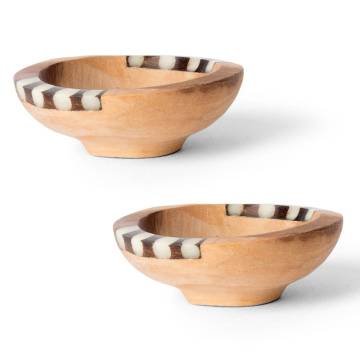Tiramisu: The History and Uniqueness of an Alluring Italian Dessert
Tiramisu is one of the most famous and beloved desserts in the world. Known for its delicate layers and mouth-watering flavors, tiramisu has become a symbol of delicious Italian cuisine. Despite its simple appearance, tiramisu has a history full of mystery and uniqueness in each layer. In this article, we will explore the origins of tiramisu, the ingredients used, and the specialties that make it relevant today.
The Origins of Tiramisu: Legends and Facts
Tiramisu originates from Italy, but there are many stories about who first created this dessert. Some say that tiramisu was first found in the Veneto region, while others argue that its origins come from the Piedmont region, and there are even some who believe that tiramisu was actually created in the city of Treviso, located in northern Italy.
According to the most popular legend, tiramisu was first served in the late 1960s at the restaurant "Le Beccherie" in Treviso by a chef named Roberto Linguanotto. He is said to have created tiramisu as a new, tempting dish using ingredients that were around him, such as mascarpone, coffee, and chocolate. At the time, tiramisu was considered an energizing food, due to the coffee it contained.
However, there are also theories that suggest that tiramisu has been around long before the 1960s, with some even claiming that it is a modern version of the classic Italian dessert called "Zuppa Inglese," which has a custard base. While the exact origins of tiramisu are uncertain, what is clear is that it has become an iconic dish that reflects the taste and culinary expertise of Italy.
Tiramisu Ingredients: Unmatched Deliciousness
While tiramisu recipes can vary depending on region and personal preference, there are some key ingredients that are never absent from this dish. Here are the ingredients commonly used to make tiramisu:
-
Mascarpone
The specialty of tiramisu lies in the use of mascarpone, a rich and soft Italian cream cheese. Mascarpone provides the smooth texture and soft taste that is characteristic of tiramisu. This cheese is made from pasteurized cow's milk and processed using pickling ingredients such as citric acid or vinegar. Its rich and creamy taste is perfect for combining with the strong taste of coffee. -
Coffee Coffee
is a key element in tiramisu. Typically, tiramisu is made using espresso or strong black coffee that is brewed directly. Coffee provides a deep and slightly bitter flavor that blends with mascarpone cheese, creating a refreshing harmony of flavors. For those who like a touch of alcohol, sometimes coffee is also mixed with a little liquor such as amaretto or marsala wine to give it a more complex flavor. -
Ladyfingers (Savoiardi)
Ladyfingers, also known as savoiardi, are light and crispy finger-shaped cookies. They are used to make the base layer of tiramisu. The ladyfingers are soaked in coffee, giving them a soft yet slightly chewy texture after being layered, blending with the mascarpone cream. -
Eggs
In traditional tiramisu, eggs are used to make the mascarpone cream. Raw eggs are mixed with sugar and beaten until stiff to create a light and fluffy texture. However, for those wary of using raw eggs, some variations of tiramisu use cream or condensed milk instead of eggs. -
Chocolate or Cocoa
As a finishing touch, tiramisu is usually sprinkled with cocoa powder or chocolate chips. Cocoa provides a slightly bitter taste that balances the sweetness of the mascarpone cream and coffee. Some variations also use grated chocolate for an aesthetic touch as well as a richer taste.
How to Serve: Layers of Deliciousness
The process of making tiramisu is not too complicated, but it requires patience and attention to detail. The first step is to prepare strong coffee, then the ladyfingers are dipped briefly in hot coffee before being arranged in the first layer in a container or bowl. After that, a mixture of soft and creamy mascarpone is mixed with eggs that have been beaten stiffly and sugar. This mixture is then chosen on top of the ladyfingers. This process is repeated by adding layers of ladyfingers and mascarpone until it reaches several layers that look elegant and tempting.
Tiramisu should be chilled in the refrigerator for several hours, even overnight, so that the flavors and textures can blend together. When ready to serve, tiramisu will present a harmonious taste, with a combination of the smoothness of mascarpone cream, the richness of coffee, and the chewiness of ladyfingers that are perfectly absorbed.
The Uniqueness of Tiramisu: Why Do Many People Love It?
There are several reasons why tiramisu has become a worldwide favorite. Here are some of the factors that make tiramisu so special:
-
Perfect Balance of Flavors
Tiramisu is known for its unique combination of sweet, bitter, and slightly sour flavors. Coffee provides a strong, bitter flavor, while mascarpone adds a smooth, soft sweetness. It is a balance of flavors that is very pleasing to the palate. -
Soft and Mellow Texture
One of the specialties of tiramisu is its soft and moist texture. The ladyfingers dipped in coffee become chewier, while the mascarpone cream provides a smooth and light layer. This blending of textures makes every bite feel so indulgent. -
Serving Versatility
Tiramisu can be served in various ways to suit your taste and occasion. It can be served in its classic form in a large bowl or as individual portions in small glasses. Variations of tiramisu are also increasingly developing, such as tiramisu with added fruits, alcoholic variations, or even egg-free tiramisu for those who want a safer alternative. -
Symbol of Italian Warmth and Deliciousness
Tiramisu is not just a dessert, but also a symbol of the warmth of Italian cuisine. This food is often associated with the relaxed atmosphere in Italy, where family and friends gather to enjoy a meal together. Tiramisu reflects the philosophy of Italian cuisine that emphasizes the quality of local ingredients and balanced flavors.
Tiramisu Around the World
Although it originated in Italy, tiramisu has now become an international dessert. It is found in restaurants and eateries all over the world, in both traditional versions and modern variations. In many countries, tiramisu has been adapted with local touches, such as adding local ingredients or changing the way it is served to suit local tastes.
For example, in Japan, tiramisu is often flavored with green tea (matcha) or red beans (anko). In the United States, some restaurants have even tried to create tiramisu in the form of layer cakes or even tiramisu ice cream.
Conclusion
Tiramisu is one of those desserts that combines the beauty of Italian cuisine with extraordinary taste. With a mysterious history and a variety of mouth-watering ingredients, tiramisu has managed to maintain its place as an iconic dish of all time. Its smoothness, perfect balance of flavors, and captivating visual appeal make tiramisu not just a dessert, but also a satisfying culinary experience. It is no wonder that tiramisu continues to be a top choice on dining tables around the world, from Italy to the rest of the world.











